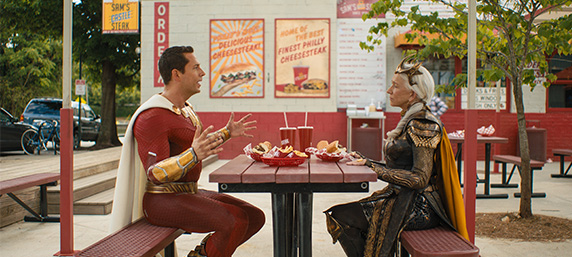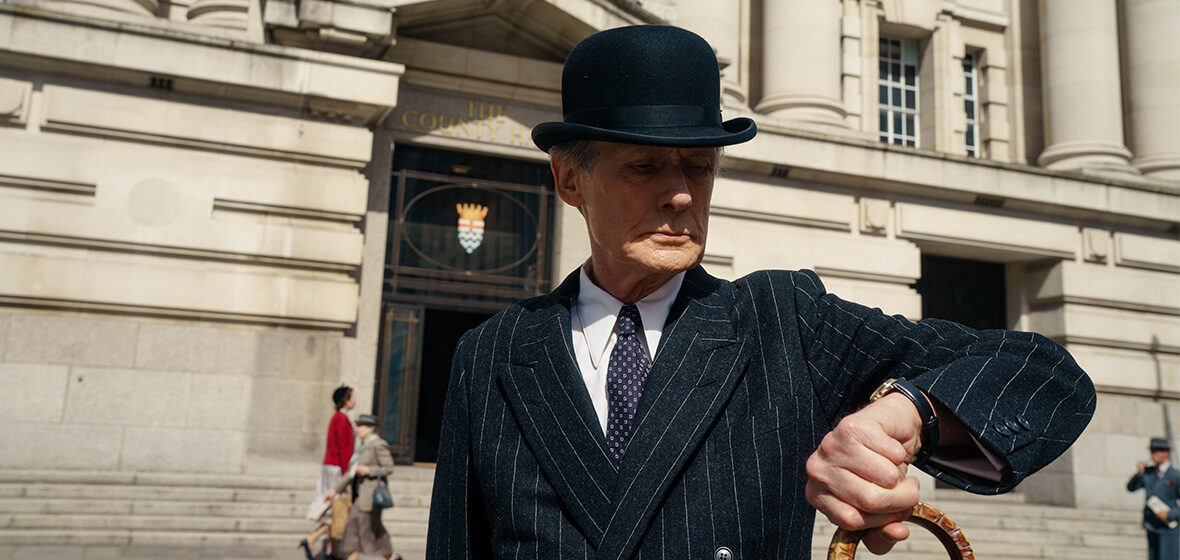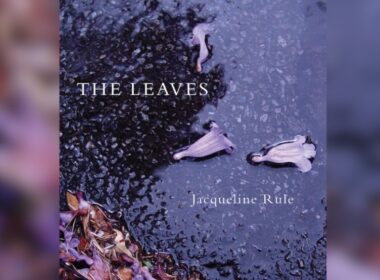Living
If anyone had to adapt Akira Kurosawa’s Ikiru, it would have to be Kazuo Ishiguro. It’s an idea that makes sense. The novelist who wrote Never Let Me Go and Remains of the Day understands not only what made Kurosawa’s gentle and heartwarming classic unique, but also how to identify the relevance of translating it into the reality of 1950s London. If you know the original film, you can rest assured that its legacy is honoured in this version. If you don’t, then welcome. Grab a pack of tissues and let your tear ducts flow.
Living is the story of a stern old stern bureaucrat, Mr Williams (Bill Nighy), finding a new perspective in his life. Mr Williams is the manager of a team of other bureaucrats who are part of a machine of civil servants that keeps on turning without delivering solutions. A request is passed from department to department until it gets lost in Mr Williams’ desk. His is a thankless job and its only redeeming feature for him is the pleasure he finds in following the rules.
His life is paced so that everything happens at a specific time. He always takes the same train, sits on the same seat, says the same things, and returns home to his son and daughter-in-law. His life is only complete in that — to all intents and purposes — he seems content with it. And that’s more than many of us can say.
That is, until a doctor drops the news that he is dying of cancer. In a moment of unexpected clarity, he considers terminating his life of his own accord, alone in a little seaside town. Contemplating his last day, he ends up helping a young fellow, who leads him to a night out in town, the kind that changes a person. For Mr Williams, this means losing his recognisable bowler hat, and finding a replacement in a fashionable trilby. This is just the kind of visual detail that is so easy to accomplish, and yet so rewarding in its effect.
After the trip, Mr Williams stops going to work altogether. Instead, he spends as much time as possible with an ex-colleague, a sprightly young lady, Ms Harris (Aimee Lou Wood), whom he admires for her joie de vivre. There is no sexual tension, this is not that kind of film, and Mr Williams is not that kind of man. This is a profound account of a person facing death with the will to leave something behind. To be remembered.
So far, it’s pretty much Ikiru, but Ishiguro’s powers of observation set it apart. For example, in the original, the young lady ends up working in a toy factory, and she remarks how happy it leaves her to create an object that will be a source of happiness for a child. In Living, Ms Harris is supposed to have a managerial position at a famous restaurant but ends up as a humble server, abused by her manager and patrons. In a different circumstance, Mr Williams would have been one of those clients belittling someone of her status.
The director, Olivier Hermanus, the South African filmmaker who previously directed the cult film Moffie, films everything with a joyful outdated flair. The film feels like it comes from the 1950s, albeit with a beautiful and modern colour palette. There’s an element of early David Lean and post-war BBC acumen. Hermanus finds his inspiration in British culture and Italian neo-realism, but with an eye on what made Kurosawa’s film special. And that’s how he gets to the end, an exceptionally well-put-together sequence of the report on one specific event — an event that ends on a sad note as snow falls in London. It’s perfect.
But even if none of this had worked, and Ishiguro’s script wasn’t so emotionally contained, or Hermanus’ skill not so life-affirming, there is always Nighy. He manages to portray not just another “cranky old man”, but both the stereotypical bureaucrat and a well-rounded character in the flesh. He has a careful intensity in his manner, adding warmth where we thought there was none before. That slow emotional ascent of his character is a feat that only a few, not even experienced actors, have been able to achieve. And Nighy makes it look easy.
Living is a delight. Young and old can connect with the story. Its themes are universal to everyone. Its worries and concerns are shared by any adult with a beating heart. But it doesn’t leave us feeling dejected. With so much cynicism in the world, I welcome a film about death that makes us feel our lives are worth living.
Verdict: 4 out of 5
For every good person out there. Especially those who know Bill Nighy is an underrated thespian in his generation.

Shazam! Fury of the Gods
For the past three years, there has been a discussion about whether the superhero film genre is experiencing fatigue. Since then, Marvel has both broken records AND disappointed in the box office (depending on your perspective). DC’s universe crashed and burned while also making a gazillion dollars, just not the gazillion its IP overlords wanted. In reality, there is no superhero fatigue in the sense that, whatever happens, audiences will always flock to the film if it’s well-marketed and they recognise the character. What there is is story fatigue, because there is just so much you can say when every superhero film is a variation on the esoteric relationship between the hero as a human being and his reluctant sense of responsibility. “With great power comes great responsibility” was a quote from the first Spider-man pic precisely 21 years ago. That should have ended that conversation, yet we’re back exploring the same beaten topic every year. It’s exhausting.
Sure, it’s not the case for all superhero movies. But it is for the majority, and, for all intents and purposes, it’s the case for Shazam! Fury of the Gods (henceforth Shazam 2).
The sequel to the one film in the DC cinematic universe that is unapologetically skewed towards children and young teenagers, it tells the story of a young teen called Billy (Asher Angel) who is given the power by a mysterious wizard (Djimon Hounsou) to transform into a superman-like adult superhero (played by Zachary Levi) whenever he shouts the word “Shazam”. Imagine Big, but instead of transforming into Tom Hanks, it’s a cheaper version of Henry Cavill.
The first film was charming enough, but it always felt like an outlier in the cinematic universe. The end included a weird gag where Superman appears. Still, because the actor who plays him didn’t want to be in it, his head is strangely always left out of frame – the sequel makes a a funny and effective callback to that moment.
The mood of Shazam 2 is always light and charming, perfectly fit for a child who is too young to understand the convoluted and dark themes of the Justice League films. Shazam was a balm just because it was different from the rest.
That’s not to say it was good. It was fine. Forgettable but fine.
The sequel tries to repeat the formula, but fails to understand the elements of its world. Several years after the first film, Billy is now 17. Now his whole family of adopted brothers and sisters share the power to transform into superheroes. Shazam, the hero, is having a crisis of confidence, intensified by the fact that everyone in Philadelphia seems to hate their local heroes. I don’t know why. Right at the start, him and his siblings save everyone from a falling bridge, but because they fail to save the bridge, they are attacked by the media.
The status quo is broken by the appearance of three Greek deities, Anthea, Hespera and Calypso (Helen Mirren, Rachel Zegler and Lucy Liu, respectively), who are freed from their imprisonment and go out to find the staff of their ancestors and the powers of Zeus – coincidentally the same powers held by Billy and his siblings. Hespera infiltrates the local high school, where she befriends Billy’s brother Freddy (Jack Dylan Grazer, whose adult alter ego is played by Adam Brody), while the other two plot some magic mumbo jumbo that includes finding the seeds of a tree and a dragon made of wood. None of it is essential except that, to achieve their goal, the three sisters must get all their powers from the teens and, maybe, destroy the whole world while they’re at it.
So nothing new here. It’s all a standard superhero affair. Billy doesn’t think he has the right to wield the power bestowed upon him, until eventually he does. Everyone’s actions are conditioned by the plot’s needs and not the characters’ will. It’s a beat-by-beat story, factory-built. A committee has set up every joke, and every decision has been made with marketing approval.
What is disappointing is how the film steers in the right direction aesthetically. It has this 90s Saturday morning cartoon charm that I wasn’t expecting, like a longer episode of Power Rangers, though it’s a waste to see actors like Mirren and Liu speaking poorly written lines with a Shakespearean intensity.
For me, the biggest fault is Levi. In the first film, it worked that he was playing a child trapped in an adult’s body. But Billy is 17 now. In the few scenes he gets to be himself, he’s a typical late teen with a late teen’s worries. He’s slightly brooding but definitely concerned. Levi, though, is still playing young Billy from the first film. The dissonance is significant, as if someone asked him to tone it down. Still, either Levi didn’t have the talent to pull it off, or an executive complained that the film didn’t have the same childish jokes as the first one. But it feels like the opportunity to further develop Shazam, to add more depth to the character, has been missed. The first film was about how a child would react if he was suddenly an adult superhero. The second should have been about the mistakes he would inevitably make.
Shazam 2 is not for me, but it’s also not trying to be. I can intellectualise everything about it that justifies why I didn’t like it. Still, it will mean something to those who like it. It’s a childish movie, but at least it was made to be enjoyed by children. It feels like an early morning bender of sugar-coated cereals reruns of Teenage Mutant Ninja Turtles. Power to it, I guess.
Verdict: 2 out of 5
For anyone under 12. Nothing wrong with that. It’s just the way it is.




